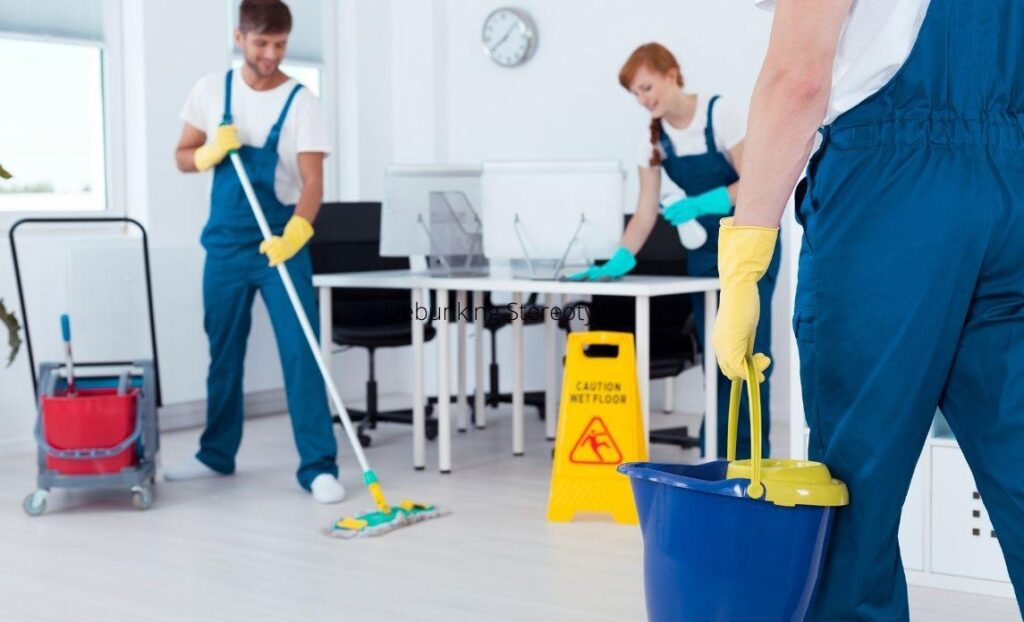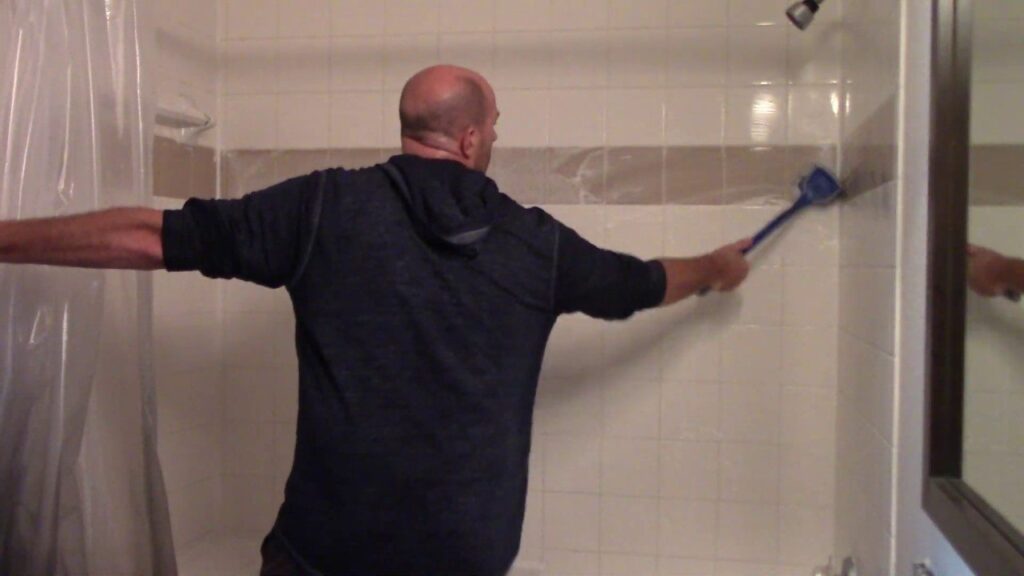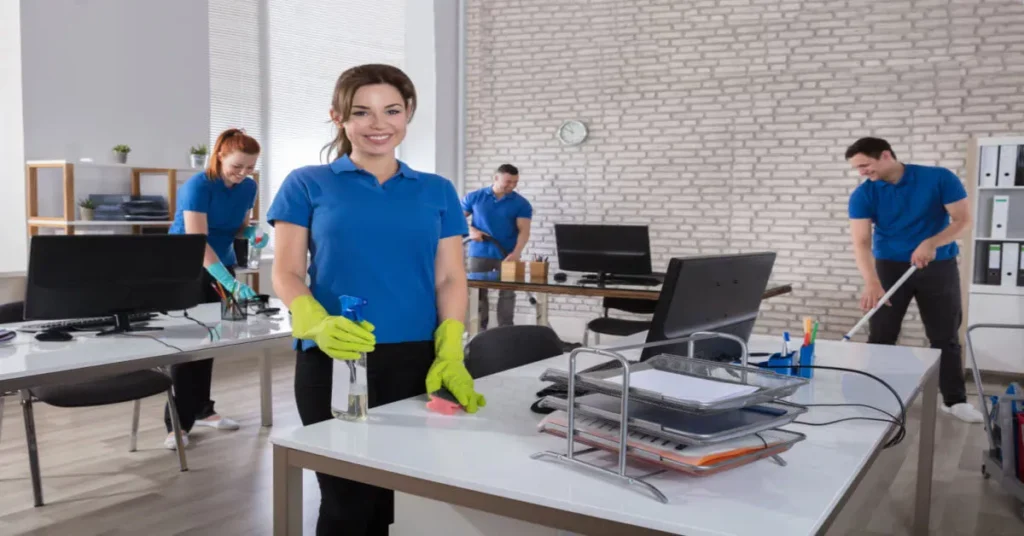Office equipment is integral to daily operations and productivity. From computers and printers to telephones and scanners, these devices require careful handling, especially during cleaning. Ensuring the safety of office equipment during cleaning involves understanding the equipment’s vulnerabilities, using appropriate cleaning methods and materials, and training staff properly. In this blog post, Evolution DR Cleaning delves to these aspects in detail.
Understanding Office Equipment Vulnerabilities

Office equipment is often delicate and expensive, making it crucial to understand its vulnerabilities before initiating any cleaning procedure. Electronic devices, for example, are highly sensitive to moisture and static electricity. Moisture can cause short circuits, corrosion, and permanent damage to internal components. Static electricity can disrupt the functioning of microchips and other sensitive parts. Additionally, mechanical parts such as keyboards and printer rollers can be damaged by improper cleaning techniques or harsh chemicals. Understanding these vulnerabilities helps in selecting appropriate cleaning methods and materials.
Assessing the Office Environment
Before commencing cleaning, it is important to assess the office environment. This includes identifying the types of equipment present, their locations, and their specific cleaning requirements. Some equipment may be located in high-traffic areas and accumulate more dust and dirt, while others might be in more controlled environments. Knowing the layout and conditions of the office allows for the development of a tailored cleaning plan that minimizes risks to the equipment.
Assessing the office environment involves evaluating cleanliness, organization, and overall aesthetic appeal. A well-maintained office fosters productivity and enhances employee morale. Regular assessments ensure that workspaces are conducive to health and safety standards, promoting a positive impression for clients and visitors. This proactive approach not only improves air quality and reduces allergens but also extends the lifespan of office furnishings. Linking these assessments with professional office cleaning services ensures consistent maintenance, providing a clean and welcoming environment that supports business success.
Proper Cleaning Techniques
Using proper cleaning techniques is critical to avoid damaging office equipment. When cleaning computer monitors and screens, it is best to use a dry or slightly damp microfiber cloth. Excessive moisture should be avoided as it can seep into the device and cause damage. For keyboards and other mechanical parts, compressed air can be used to blow out dust and debris. When cleaning the exterior of electronic devices, a gentle wiping motion should be employed to prevent scratching or damaging the surfaces. It is also important to avoid spraying cleaning solutions directly onto equipment; instead, spray onto the cloth and then wipe.
Proper cleaning techniques are crucial for maintaining a pristine environment. From dusting high surfaces to scrubbing floors, each step ensures thorough sanitation. Effective techniques include using microfiber cloths for dusting, applying appropriate cleaning agents for different surfaces, and employing systematic approaches to tackle dirt and grime. These methods not only enhance cleanliness but also prolong the lifespan of furnishings and fixtures. When opting for deep cleaning services, professionals adhere to these meticulous techniques, delivering comprehensive cleanliness and satisfaction for homes and offices alike.
Power Down and Unplug Equipment
Before beginning any cleaning process, always power down and unplug the equipment. This step is crucial to prevent electrical shocks and to protect the internal components of the devices. Unplugging the equipment also ensures that there is no active electrical current that could interact with cleaning solutions, leading to short circuits or other electrical issues. Additionally, it is a safety measure to protect the cleaning staff from potential harm.
Training Cleaning Staff
Proper training of cleaning staff is essential to ensure the safety of office equipment. Staff should be educated on the correct cleaning methods, the use of appropriate supplies, and the importance of handling equipment carefully. Training should also include information on how to identify and address any potential issues that may arise during cleaning. For instance, if a piece of equipment appears to be malfunctioning, the staff should know the proper protocol to report the issue rather than attempting to fix it themselves. Regular training sessions can keep staff updated on the best practices and any new cleaning products or techniques.
Monitoring and Maintenance
Regular monitoring and maintenance of office equipment can help identify any potential issues early and prevent damage during cleaning. This includes routine checks for dust buildup, loose connections, and signs of wear and tear. By addressing these issues promptly, the risk of damage during cleaning can be minimized. Maintenance should also include regular updates to the cleaning protocols and schedules to ensure they remain effective and aligned with the office’s needs.
Using Professional Cleaning Services
For offices with extensive and sensitive equipment, using professional cleaning services can be a prudent choice. Professional cleaners have the expertise and specialized equipment to handle office equipment safely. They are trained to use the appropriate cleaning methods and supplies, reducing the risk of damage. When selecting a cleaning service, it is important to choose one with experience in cleaning office environments and handling electronic equipment. It is also advisable to review their cleaning protocols and ensure they align with the office’s requirements.
Professional cleaning services ensure thorough sanitation and hygiene, offering expertise that surpasses regular cleaning routines. By employing trained professionals, such services guarantee meticulous attention to detail, using industry-standard equipment and eco-friendly products for optimal cleanliness. This approach not only saves time but also enhances indoor air quality and extends the lifespan of fixtures and surfaces. For comprehensive bathroom cleaning service, professionals tackle tough stains, mold, and bacteria, ensuring a spotless and sanitized environment that promotes health and well-being.
Ensuring Compliance with Safety Standards
Compliance with safety standards is essential to protect both the office equipment and the cleaning staff. This includes following guidelines set by equipment manufacturers for cleaning and maintenance. It also involves adhering to workplace safety regulations to prevent accidents and injuries. Ensuring compliance with these standards can help create a safe and efficient cleaning process that protects the office equipment and maintains a healthy working environment.
Implementing Anti-Static Measures
Static electricity is a common hazard for office equipment during cleaning. Implementing anti-static measures can help prevent damage caused by static discharge. This includes using anti-static cleaning cloths and solutions, as well as ensuring that cleaning staff wear anti-static gloves or wristbands. Additionally, keeping the humidity levels in the office at an optimal level can reduce the risk of static buildup. Anti-static mats and equipment grounding can also be employed to further protect sensitive electronic devices.
Cleaning Special Equipment
Some office equipment, such as copiers and fax machines, may require special cleaning procedures. It is important to follow the manufacturer’s guidelines for cleaning these devices to avoid damage. For example, copiers have delicate components such as drums and rollers that can be easily damaged by improper cleaning. Using the recommended cleaning supplies and techniques for each type of special equipment can ensure their longevity and optimal performance.
Addressing Spills and Accidents
Spills and accidents can occur during cleaning, and it is important to know how to address them promptly to minimize damage. In the event of a spill on electronic equipment, the first step is to power down and unplug the device immediately. The spill should be gently wiped away using a dry cloth, and any remaining moisture should be allowed to evaporate completely before attempting to power the device back on. It is also important to inspect the equipment for any signs of damage and to seek professional repair services if necessary.
Establishing a Feedback Loop
Establishing a feedback loop can help improve the cleaning process and ensure the safety of office equipment. This involves encouraging cleaning staff and office employees to provide feedback on the cleaning procedures and any issues they observe. By collecting and analyzing this feedback, adjustments can be made to the cleaning protocols to enhance their effectiveness and safety. Regularly reviewing and updating the cleaning procedures based on feedback ensures that they remain aligned with the office’s needs and best practices.
Investing in Quality Equipment
Investing in high-quality office equipment can reduce the risk of damage during cleaning. Quality equipment is often more durable and better designed to withstand regular use and cleaning. Additionally, high-quality devices usually come with comprehensive maintenance and cleaning guidelines from the manufacturer, which can be followed to ensure their longevity. While the initial cost may be higher, the long-term benefits of reduced maintenance and replacement costs make it a worthwhile investment.
Promoting a Clean Desk Policy
Promoting a clean desk policy can help facilitate the cleaning process and protect office equipment. A clean desk policy encourages employees to keep their workspaces organized and free of clutter, making it easier for cleaning staff to access and clean the equipment. This policy can also reduce the risk of accidental damage caused by clutter during cleaning. By fostering a culture of cleanliness and organization, the office environment can be maintained more effectively.
Implementing Regular Audits
Regular audits of the cleaning process can help ensure that the protocols are being followed correctly and that the office equipment is being protected. Audits should include inspections of the cleaning supplies and equipment used, as well as observations of the cleaning techniques employed by staff. Any discrepancies or issues identified during the audits should be addressed promptly to improve the cleaning process. Regular audits also provide an opportunity to update the cleaning procedures based on the latest best practices and feedback.
Enhancing Communication
Effective communication between cleaning staff, office employees, and management is crucial for the safety of office equipment during cleaning. Clear communication ensures that everyone is aware of the cleaning schedule, the procedures to be followed, and any specific requirements for certain equipment. It also allows for timely reporting and resolution of any issues that arise during cleaning. By fostering open communication, a collaborative approach to maintaining a clean and safe office environment can be achieved.
FAQs
How do you keep office equipment clean and hygienic?
Tools like disinfectant spray or alcohol wipes are usually adequate to sanitise office equipment. In some instances, it may be necessary to use industrial-strength cleaners, but it’s important to make sure you don’t use any substances that could potentially harm the delicate electronics.
How do you ensure the cleanliness of equipment before use?
soak items in very hot water (77°C for 30 sec) or in diluted bleach, or. saturate items with 70% isopropyl alcohol or ethanol, or. use a commercial sanitiser and follow the manufacturer’s instructions, or. use a dishwasher that can sanitise (usually the longest hottest setting).
How do you manage office cleaning?
Daily cleaning should include dusting surfaces, vacuuming floors, and disinfecting high-touch areas like doorknobs, light switches, and communal spaces. Regularly cleaning these frequently used areas can significantly reduce the risk of spreading germs, thereby fostering a healthier work atmosphere.
What’s the best way to ensure effective cleaning?
Effective cleaning needs to be carried out in two stages. Disinfectants will only work on clean surfaces. Always use a cleaning product to remove visible dirt and grease before disinfecting. Always check the manufacturer’s instructions for the correct dilution and contact time for disinfectants or sanitisers.
What is the best cleaning method?
Sardone says to start at the top of the room, such as dusting a ceiling fan, and work your way down to the floor to eliminate redundant work. Likewise, cleaning left to right ensures that you cover the entire room instead of darting from place to place.
Conclusion
Ensuring the safety of office equipment during cleaning requires a comprehensive approach that includes understanding the vulnerabilities of the equipment, using appropriate cleaning supplies and techniques, training staff properly, and implementing regular monitoring and maintenance. By following these guidelines, offices can maintain a clean and efficient working environment while protecting their valuable equipment. Regular audits, feedback loops, and effective communication further enhance the cleaning process and ensure the longevity and optimal performance of office equipment. Investing in quality equipment and professional cleaning services, where necessary, can also provide additional protection and peace of mind.


